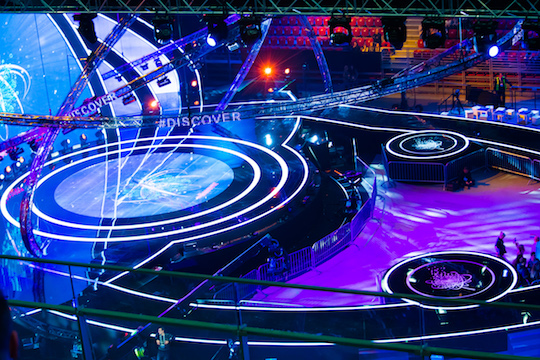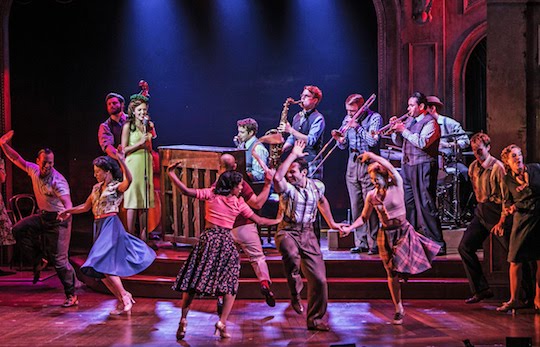Ever since I was child, I dreamed of working with technology and design. I remember being around 13 years old and annoying my mom to death until she gave in to buy me some crafting materials. At the time I had a small band and I thought it would be cool to create a small version of what would be our concert stage one day. So I grabbed a few lights from one of my toys and ended up making a 50×50 cm outdoor stage with a few band risers and a roof included.
It wasn’t until years later, while I was studying in Cape Town, South Africa, that I got the opportunity to get involved in an internship with the Stage Design Department in a church that I finally got to learn more about this fascinating creative area.
It is funny how set design is the one of the areas that causes the biggest impact in a play, or a concert, but it is the one that people pay less attention to when it comes to how it comes to life and the process behind it. So if you have never thought about it, and would like to know more; or if you are interested in becoming a set designer and don’t know exactly where to start, let me help you with some useful information.
Working with the space you have
As a set designer, you might get a white canvas even when it comes to the venue you are using, so you might have the opportunity of being involved in the process of choosing the venue and the assets you would like to work with. But other times, you might have to work with hired venues that already come with certain dimensions and elements. Some venues might include a main screen that you can work around, some venues (Arenas for example) might come completely empty when it comes to the stage and you might have to work with a production designer to build the stage from scratch.
Know your space and make the most out of it. Use the elements you have available and work around them if possible, instead of wasting your time, budget and energy in trying to change them. Look at walls, and flooring, how can you make the most out of these spaces? Is there anything you can hang? If the stage is too small, is there a chance for you to extend it? The space you have does affect everything about your design, but nothing is impossible to adapt, which leads us to our next section.
Interpreting a design
My oversight used to tell me that it is always better to dream big and later have to adapt things than to dream small and lack the wow factor that you could’ve implemented. What concept are you working with? What would be the best possible presentation of that concept? How can you adapt it to the space, materials and human resources you have available? These are all important questions to ask when it comes to interpreting a design.
Since we were a part of a multi-campus church in South Africa, I got to experience what it looks like to apply a design to different venues and accomplish the same desired effect. To do this, first of all you need to recognise what are the most important elements of the design you are working with. What is the main concept? Is it meant to have a certain shape or certain colours? Is it meant to be a backdrop for cameras? or is it meant to remain hidden? What are the functionalities of the set? Does it have to move? Does it stay in one place?
The set you are working with is always meant to complement and be complemented by the elements already present in the venue. And as a set designer it is your job to ensure the set continues to keep its main elements even after it is adapted to a new venue.
Working under a budget
This is the realistic aspect of set design, the one thing that can limit whatever you are dreaming or make it happen. Working under a budget can be frustrating, but at the same time it helps increase your creativity and resourcefulness as a designer, for you will have to learn how to do more with less. One of the things I learned during my internship is that there is an incredible variety of materials that you can use in order to obtain similar effects.
When choosing a material it will all depend on how you want to use it and for how long. Good quality materials always point to endurance and good functioning, but temporary things can also be useful if you are only to use them once and if you are working with a very small budget. Just make sure that whatever you are working with is always safe!
Effective and beautiful
This is the beautiful balance between functionality and aesthetics. A good set design accomplishes both goals, and it ends up being a beautiful complement to whatever it is that you are trying to communicate instead of a distraction. A beautiful set that is hard to transport and impossible to store, is very hard to work with, because the work you invested in it will have to be repeated if the set is to be used over and over again. On the other hand if it is highly effective and functional but not beautiful, it ends up distracting people and leaving a feeling that there could be more to it.
The world of set design is an very fun and beautiful! You get to create moments of wonder and amazement in people, moments that the audience will remember forever. So whether you are getting started or continue to improve in this career, make sure that you don’t forget that you have a pretty amazing job!
Have you ever seen the process of creating a stage? What are your thoughts on it? Let us know!


